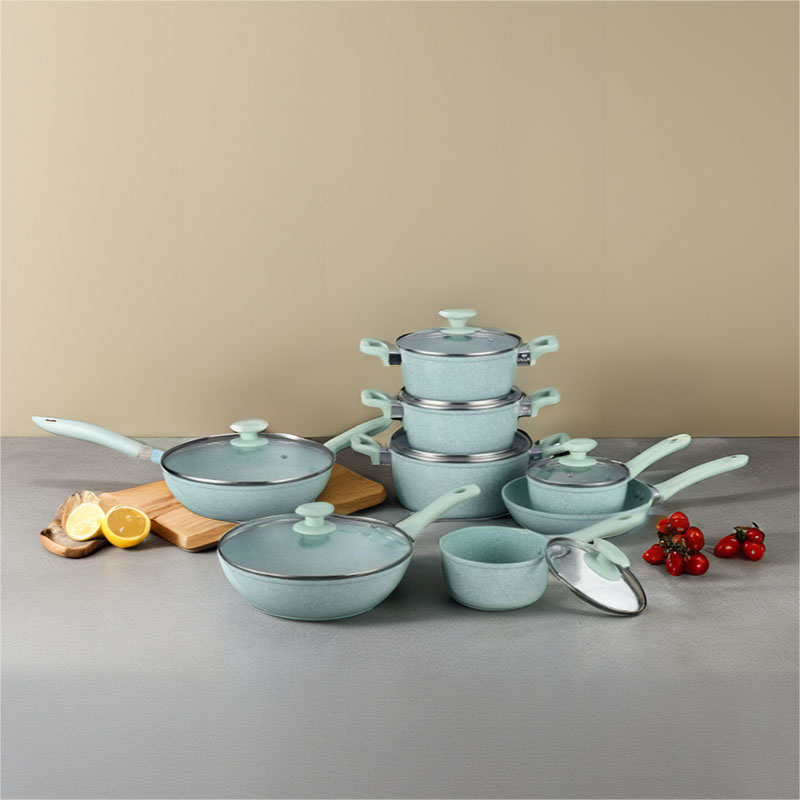
The attention and appreciation that Non-stick grill pans and Cookware receive are due to the balance between tolerable lightweight construction and the heat conductivity of the material. This makes the work of the manufacturers praiseworthy. Non-stick manufacturers overcome the challenge of lightweight construction and thermal performance by the integration of material science and process innovation.
Heat conductivity and lightweight construction are the most important attributes in the design pan.
Lightweight construction and heat conductivity are important attributes in the design of baking pans for efficient and comfortable cooking. Numerous design choices can result in uneven heat baking which might scorch, underbake, or burn. Too much weight will make the pan hard to use, frustrating the user experience. Nonetheless, manufacturers try to reduce/remove excess weight.
Traditionally, lightweight materials have poor heat conductivity and the dense materials have poor heat conductivity. Non-stick pan manufacturers apply innovative material combinations to overcome weight and thermal conductivity challenges.
Non-stick pan manufacturers conduct extensive research on materials, using composite materials and employing custom treatment processes to improve 'material and function'. The table below captures some comparisons on material function and performance characteristics.
|
Material Type |
Thermal Conductivity |
Weight | Advantages | Disadvantages | Application Scenarios |
| Aluminum Alloy | High | Light | Low cost, easy to process |
Prone to oxidation, requires coating protection |
Basic home-use baking pans |
| Stainless Steel | Medium | Medium | Durable, corrosion-resistant |
Pure stainless steel has average thermal conductivity |
High-end composite baking pans |
| Carbon Steel | High | Heavy | High strength, long lifespan |
Requires anti-rust treatment |
Professional baking scenarios |
| Composite Materials | High | Light |
Optimal comprehensive performance |
Higher cost |
Mainstream lightweight products |
Based on the comparisons, the base material of choice for Non-stick pans is the aluminum alloy, attributed to the high value of thermal conductivity and low weight. Weaknesses of the aluminum base material are treated with additions of other alloys, surface coatings, and strengthened materials.
Non-stick grill pan makers frequently use multi-layer composite structures. For instance, an inner layer of aluminum maintains thermal efficiency and the outer layer of stainless steel provides a barrier to corrosion, while a non-stick layer of coating is inter-leaved between the other layers. This allows for a marked reduction in product weight.
Structural Design: Optimizing Heat Transfer Efficiency
In structural design, Non-stick grill pan manufacturers continuously refine product forms through scientific calculations and simulation testing.
- Thin-Wall Design: Undergoing precision stamping processes to reduce material usage while maintaining structural integrity, achieving lightweight objectives.
- Reinforced Rib Structure: Strategically placed ribs on the baking pan's underside enhance structural stability while increasing heat exchange surface area.
- Layered Heat Conduction Design: A specialized sandwich structure facilitates rapid heat transfer from the base to the cooking surface, ensuring uniform temperature distribution.
These structural innovations enable Non-stick grill pan manufacturers to achieve superior thermal conductivity while reducing product weight.
Manufacturing Processes: Precision Engineering Ensures Quality
Advanced manufacturing techniques are pivotal to realizing design concepts. Non-stick pan manufacturers employ multiple precision processing technologies to guarantee consistent product quality.
- Die Casting: To create complex shaped pan bases with consistent wall thickness, molten metal is injected into dies at high pressure.
- Coating Process: Non-stick coating is applied to the substrate surface using electrostatic spraying or dip coating techniques, then cured at high temperatures.
- Surface Treatment: Anodizing is one of the processes used to provide surface treatment to an aluminum tray, which forms a protective coating and improves durability.
These ongoing improvements ensure reliability and lightweight design for mass produced products, allowing more flexible and easier to work with Non-stick grill pans.
Non-stick grill pans treated with advanced technology offer multiple unique benefits. Exceptional heat conductivity markedly improves energy efficiency and cooking times by significantly reducing preheating durations. Scientifically designed material combinations, along with advanced surface treatment processes, improve product durability and extend the service life.
Non-stick grill pan manufacturers focus on advanced materials and surface treatments to enhance the user experience during baking. There is no doubt on the possibility of more efficient and lighter Non-stick grill pans to be released in the near future.



 Español
Español عربى
عربى

